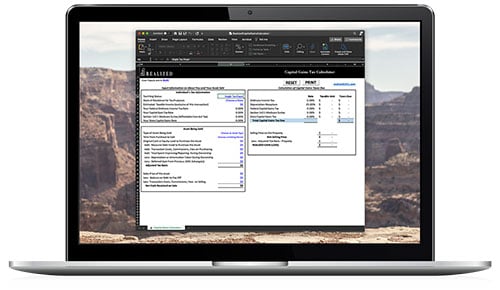Many countries have implemented a capital gains tax, but capital gains tax rates and the tax structure itself vary greatly from one country to the next.
Capital gains taxes are generated when you sell an asset for a profit. Assets can be real property, precious metals, stocks, bonds, cryptocurrency, land, and similar holdings or resources.
In this article, we'll look at how capital gains taxes work in the U.S. and other countries. We will also discuss some similarities and incongruities this tax shares among different government tax entities.
Capital Gains Taxes in Different Countries
In the U.S., capital gains taxes are capped at 20 percent if you’ve held an investment asset longer than one year and you are in the highest income bracket for married or single taxpayers.
Capital gains taxes are higher in many European countries. In Denmark, for example, the highest capital gains tax is 42 percent – the highest rate across the globe. Finland caps its capital gains tax at 34 percent, while France caps it at 30 percent with a 4-percent increase for high-income earners. Meanwhile, Belgium, Luxembourg, and Slovenia do not impose capital gains taxes on profits generated from the sale of investment assets.
The way income is taxed varies greatly as well. In the U.S. you’ll generate a capital gains taxable event if you sell something for more than you paid for it – although many real estate investors use 1031 exchanges to defer paying their capital gains tax liabilities. In Great Britain, investors pay 28 percent capital gains tax on the sale of residential property, and 20 percent on “chargeable” assets such as business machinery and equipment, personal possessions, and business shares not held in a tax-free Individual Savings Account or Personal Equity Plan – the British equivalents of U.S. tax-preferred/tax-exempt Individual Retirement Accounts.
How often you’ll have to pay capital gains taxes when selling certain investments in other countries varies as well.
Capital Gains Tax Exemptions in Certain Countries
For many U.S. taxpayers, their home is their largest capital asset. Homeowners typically are exempt from paying capital gains taxes on the sale of their homes under the Taxpayer Relief Act of 1997. This act provides an exemption of $250,000 for single taxpayers and $500,000 for married couples who file a joint return. In order to claim this important exemption, you must have lived in your home for two of the last five years, and you can only take the exemption once every two years.
Rules are different in other countries, though. In Australia, there’s a six-year rule. Here’s how it works:
- Taxpayers can claim a full capital gains tax exemption for their principal place of residence (PPOR). They also can claim this exemption for up to six years if they move out of their PPOR and then rent it out. There are some qualifying conditions for leaving your principal place of residence. These conditions include taking a job overseas, caring for a sick relative, or going on an extended holiday. If you move back into the residence and leave again, the six-year rule is re-established from the date of your last move-out. If you own a property and don’t rent it out, you can take the exemption for longer than six years, the Australian Tax Office notes.
The Bottom Line
Capital gains taxes are determined by the country in which your investment assets are held and are subject to that country’s rules governing capital gains taxation. Consult with tax professionals experienced in domestic and foreign tax policies to determine your potential capital gains tax liabilities for assets held in other countries.
This material is for general information and educational purposes only. Information is based on data gathered from what we believe are reliable sources. It is not guaranteed as to accuracy, does not purport to be complete and is not intended to be used as a primary basis for investment decisions. It should also not be construed as advice meeting the particular investment needs of any investor. Realized does not provide tax or legal advice. This material is not a substitute for seeking the advice of a qualified professional for your individual situation. All investments have an inherent level of risk. The value of your investment will fluctuate with the value of the underlying investments. You could receive back less than you initially invested and there is no guarantee that you will receive any income.


